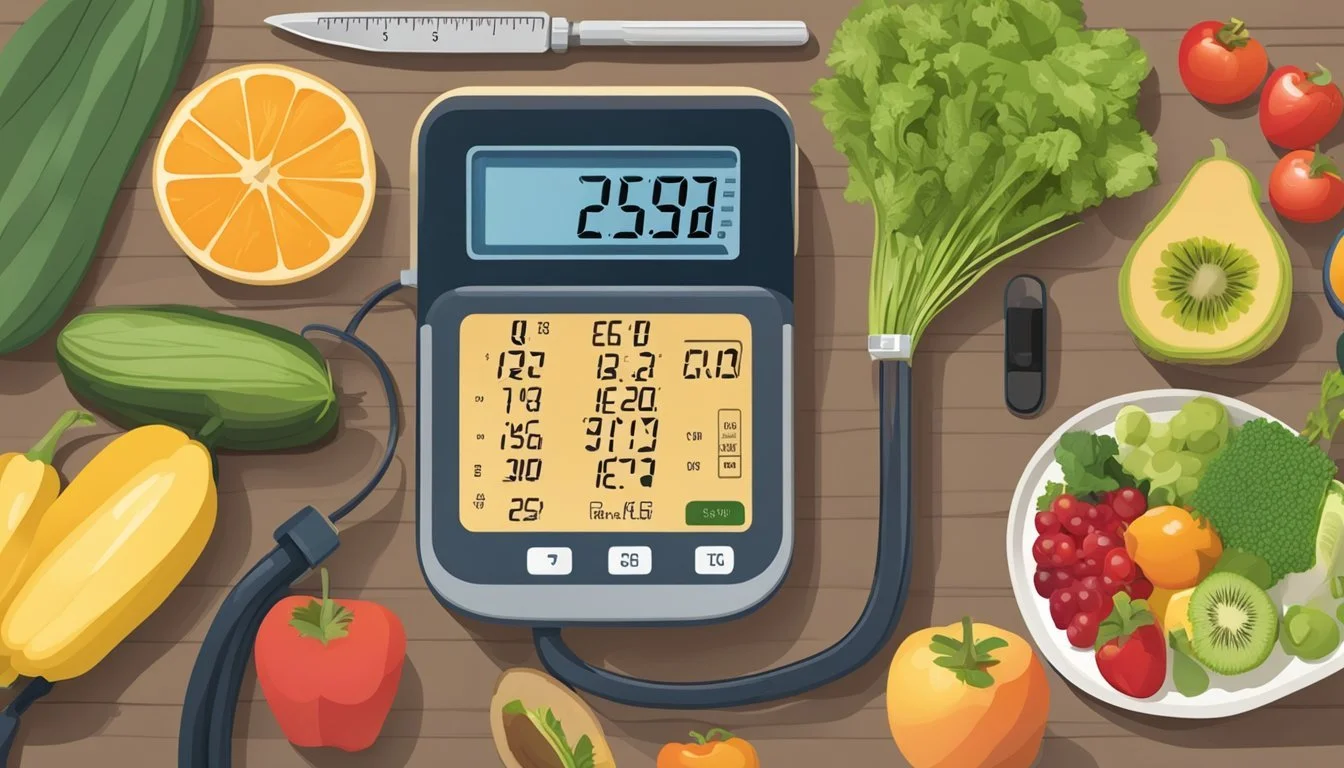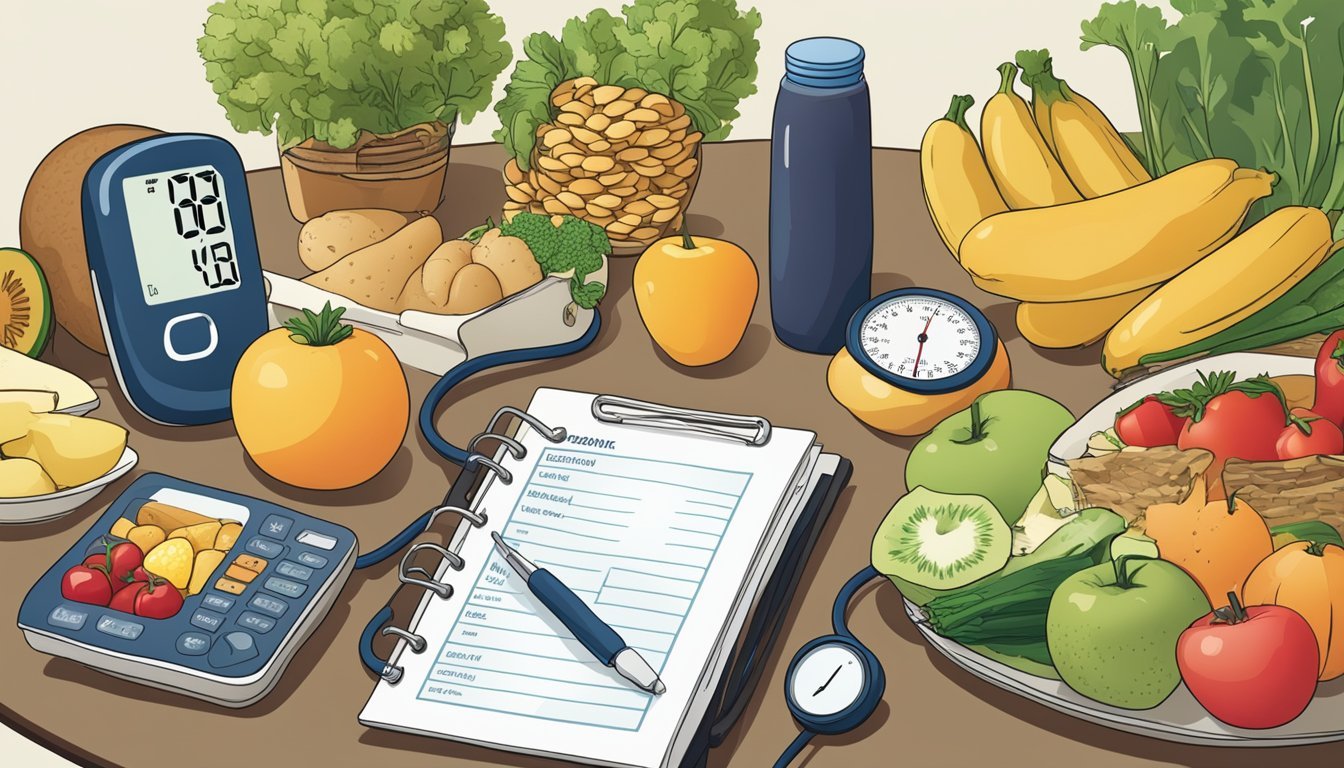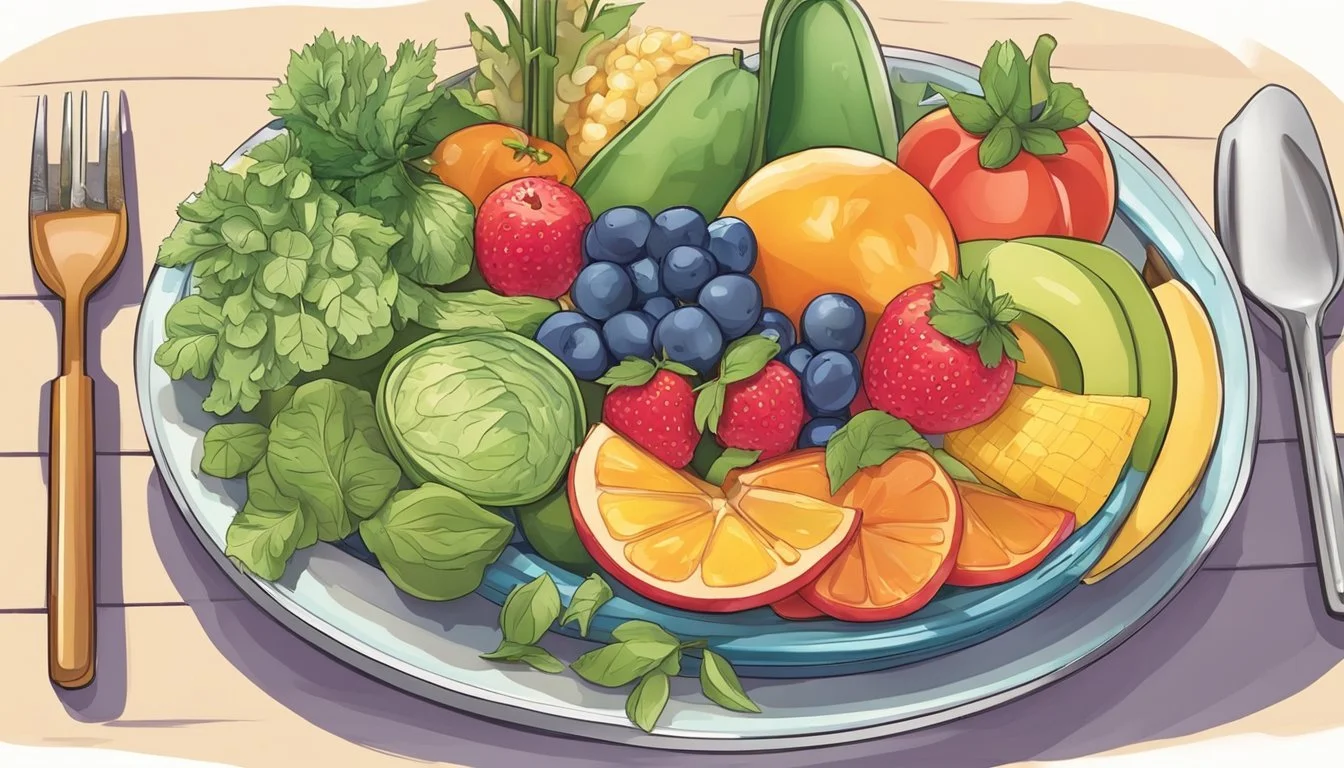How Does the Sonoma Diet Impact Blood Pressure?
Understanding the Effects
The Sonoma Diet is a Mediterranean-inspired nutritional approach that offers more than just weight loss benefits. It is grounded in the consumption of heart-healthy foods such as fruits, vegetables, whole grains, beans, nuts, lean meats, and fish. By integrating this diverse palette of foods, high blood pressure – a common precursor to heart disease – can be notably influenced. The diet emphasizes foods that are rich in potassium, calcium, and magnesium, minerals that are important in the regulation of blood pressure.
The synergy between the Sonoma Diet and blood pressure becomes evident through its alignment with dietary patterns known for cardiovascular benefits. Similar to the DASH diet, it focuses on cutting down the intake of high-sodium and high-fat foods, factors that contribute to hypertension. Moreover, the combination of low-fat dairy and lean meats in the Sonoma Diet helps manage nutrition without compromising taste or satiety, which can encourage a sustainable dietary habit, potentially leading to long-term blood pressure control.
In observing the relationship between nutrition and heart disease, the Sonoma Diet’s structure offers a way to mitigate risk factors. By promoting a balance of nutrient-dense foods and moderating the consumption of harmful components, individuals following the diet may see improvements in their blood pressure levels. This, combined with an active lifestyle and regulated portions, situates the Sonoma Diet as a lifestyle choice that may positively impact overall health and wellness.
Understanding Blood Pressure
This section will clarify the concept of blood pressure, discussing how it's measured and what factors influence it.
Blood Pressure Basics
Blood pressure is the force exerted by circulating blood on the walls of blood vessels. It is essential for maintaining life, as it ensures the delivery of oxygen and nutrients to tissues throughout the body. Two numbers represent blood pressure readings:
Systolic blood pressure: the pressure during a heartbeat.
Diastolic blood pressure: the pressure between heartbeats.
Normal blood pressure levels generally fall below 120 mm Hg systolic and 80 mm Hg diastolic, commonly noted as 120/80 mm Hg.
When blood pressure is elevated above these levels, it is referred to as hypertension. Elevated blood pressure can cause harm to the body, potentially leading to complications such as endothelial dysfunction or cardiovascular diseases.
Measuring Blood Pressure
Blood pressure is measured using a sphygmomanometer, which may be manual or digital. The measurement process is as follows:
A cuff is placed around the upper arm and inflated to constrict the arteries.
As the cuff deflates, blood flow resumes, and a healthcare provider listens to the arterial sounds or a device records the measurements.
The first audible pulse corresponds to the systolic pressure, and the point when the pulse sound fades marks the diastolic pressure.
Measurements are expressed in millimeters of mercury (mm Hg).
Factors Affecting Blood Pressure
Various factors can affect blood pressure, including:
Sodium intake: Excessive sodium can cause the body to retain water, increasing blood pressure.
Body weight: Higher body weight can lead to increased blood pressure.
Physical activity: Regular exercise can help lower blood pressure.
Stress and heart rate variability: These can cause temporary spikes in blood pressure.
Alcohol consumption: This can adversely affect blood pressure if consumed in excess.
Long-term regulation of blood pressure involves maintaining a balance between these factors to promote cardiovascular health.
Basics of the Sonoma Diet
The Sonoma Diet is a nutrition-focused eating plan that emphasizes whole foods and borrows elements from the Mediterranean diet, known for its potential benefits on blood pressure and overall health.
Dietary Principles
The Sonoma Diet promotes a high intake of proteins, healthy fats, fruits, vegetables, whole grains, nuts, seeds, and olive oil, mirroring the nutritional patterns of the Mediterranean region. It specifically advises the reduction of added sugar, caffeine, and alcohol consumption. The diet places particular importance on portion control, mindful eating, and the enjoyment of food.
Wave 1: Restrictive Phase
During Wave 1, which lasts for 10 days, the diet is the most restrictive. Fruits, vegetables, and lean proteins are heavily emphasized, while the consumption of whole grains is limited. The goal in this phase is to jumpstart weight loss, reducing calories to create a deficit. Foods high in fiber are promoted to foster fullness and regulate digestion.
Wave 2: Primary Weight Loss Phase
Wave 2 continues until the desired weight is reached. It relaxes some of Wave 1's restrictions, slowly integrating more whole grains, beans, and additional servings of fruits and vegetables. It's designed to encourage a steady and sustainable rate of weight loss, offering a more varied and somewhat higher calorie intake while maintaining the fundamental tenets of the diet.
Wave 3: Maintenance Phase
The final phase, Wave 3, is the maintenance phase of the Sonoma Diet. There are no strict dietary limitations; instead, the program focuses on the balance of nutrients to sustain a healthy diet long-term. Emphasis continues on whole foods, moderate alcohol consumption, and the ample intake of antioxidant-rich foods which aligns with the principles of the Mediterranean diet.
Sonoma Diet and Blood Pressure
The Sonoma Diet, a Mediterranean-inspired eating pattern, emphasizes the consumption of nutrient-rich foods that may positively affect blood pressure levels.
Nutrients and Heart Health
The Sonoma Diet includes a diverse array of foods that are beneficial for heart health. Leafy greens, nuts, and fish that are staples in the diet contain potassium, magnesium, and omega-3 fatty acids, all key nutrients that support heart function. Potassium is crucial as it helps regulate heartbeat and counters the detrimental effects of sodium on blood pressure. Magnesium also plays a role in maintaining a healthy blood pressure level by facilitating the relaxation of blood vessels.
Sodium and Blood Pressure Control
A cardinal element of blood pressure management is controlling sodium intake. The Sonoma Diet's emphasis on fresh produce and whole grains over processed foods inherently reduces sodium consumption. This aligns with the American Heart Association's guidelines to reduce the risk of hypertension and related diseases such as heart attack and stroke. By focusing on foods like lean meats, vegetables, and grains, the diet helps limit the intake of saturated fats and cholesterol, which, in excess, can contribute to high blood pressure and heart disease.
Managing High Blood Pressure with Diet
Research indicates that dietary patterns similar to the Sonoma Diet, such as the DASH (Dietary Approaches to Stop Hypertension) Diet, are effective for managing high blood pressure. They recommend the reduction of sodium while increasing the intake of potassium-rich foods, which can aid in the excretion of sodium and the balance of electrolytes. Although not specifically labeled as a blood pressure-reducing plan, the Sonoma Diet's principles are consistent with these guidelines, which could potentially help individuals manage or prevent hypertension.
Analyzing the Sonoma Diet
The Sonoma Diet, inspired by Mediterranean eating patterns, is designed to encourage weight management and foster healthy dietary habits. It combines a focus on whole foods with an emphasis on the consumption of heart-healthy fats.
Weight Management
The Sonoma Diet is structured around three phases, with the initial phase typically resulting in rapid weight loss due to a lower calorie intake. This phase involves a reduced consumption of calories, which can lead to the body beginning to burn fat, contributing to weight loss. As one progresses to subsequent phases, weight loss may stabilize, and the diet emphasizes maintaining a healthy weight over the long term. Consistent weight management is often linked to a reduced risk of heart disease, type 2 diabetes, and metabolic syndrome.
Phase 1: Focus on rapid weight loss.
Phase 2: Continue weight loss until the goal weight is achieved.
Phase 3: Long-term weight maintenance.
Lifestyle and Dietary Habits
The Sonoma Diet promotes a balanced approach to eating, which can positively affect lifestyle and dietary habits. It advocates for the moderate consumption of carbohydrates, the inclusion of high-fiber foods, and a diverse intake of nutrients, which are essential for managing energy levels and reducing stress.
Carbohydrates: Moderate consumption, focusing on whole grains.
Fiber: High intake through fruits, vegetables, and legumes.
Vitamins and Minerals: Diverse intake from a varied diet.
Fat: Emphasis on heart-healthy fats, including those from nuts and olive oil.
By encouraging exercise as part of the lifestyle change, the diet contributes to overall heart health, potentially lowering the risk of heart-related conditions. A shift towards healthier eating habits may also help manage and prevent conditions like heart attack, type 2 diabetes, and metabolic syndrome by maintaining balanced blood pressure levels and reducing the intake of unhealthy fats.
Comparison with Other Diets
The Sonoma Diet, a variant of the Mediterranean diet, emphasizes whole foods such as fruits, vegetables, nuts, and grains. It's important to understand how it compares to other diets in regards to blood pressure management.
Sonoma vs. DASH Diet
The Dietary Approaches to Stop Hypertension (DASH) diet is specifically designed to combat high blood pressure and heart disease. It encourages the intake of fruits, vegetables, lean meat, and low-fat dairy products while reducing the consumption of fats, red meat, and sugars.
Fruits/Vegetables: Both the Sonoma and DASH diets include high amounts of fruits and vegetables.
Whole Grains: Both diets recommend whole grains, though the DASH diet places a higher emphasis on these than the Sonoma diet.
Dairy: The DASH diet includes more low-fat dairy products for their calcium.
Fat: The Sonoma diet is less restrictive concerning fats, promoting healthy fats like those found in nuts and olive oil.
Sodium Intake: The DASH diet is lower in sodium compared to the Sonoma diet.
Sonoma vs. Mediterranean Diet
The Sonoma diet is considered a variant of the Mediterranean diet, yet there are subtle differences primarily in structure and emphasis.
Structure: The Sonoma diet is divided into three "waves" with specific food lists, unlike the Mediterranean diet, which has a less strict structure.
Alcohol: The Sonoma diet allows moderate wine consumption, akin to the Mediterranean diet, but with more specified guidelines.
Nuts/Beans: Both diets include nuts and beans as protein sources.
Heart Disease and Cholesterol: Both diets aim to lower the risk of heart disease and bad cholesterol levels through balanced intake of various food groups.
Potassium/Calcium: The Mediterranean diet naturally contains potassium and calcium but without the specific targets set by diets like the DASH.
Both the DASH and Mediterranean diets are known for their positive effects on blood pressure, and while the Sonoma diet shares many similarities, its impact on hypertension may differ due to its unique structure and guidelines for alcohol and fat intake.
Adverse Effects and Considerations
When adopting the Sonoma Diet, monitoring for potential health impacts is essential. This includes awareness of possible nutrient deficiencies, the balance of electrolytes and hormones in the body, and interactions with medications.
Possible Nutrient Deficiency
The Sonoma Diet emphasizes whole foods, fruits, vegetables, and leans meats. Despite this, there is a risk of nutrient deficiency if the diet does not include a balanced variety of these food groups. Key nutrients like vitamin D, calcium, and iron should be monitored to prevent deficiencies that can affect overall health.
Electrolyte and Hormone Balance
Electrolytes, such as sodium and potassium, are vital for maintaining the body's fluid balance and supporting proper muscle function. Adhering to a diet with altered sodium intake—like the Sonoma Diet—can lead to electrolyte imbalance. Symptoms of an imbalance include dizziness, weakness, or even more severe conditions like arrhythmias and hypotension.
Interactions with Medications
The diet can affect medication efficacy, especially for those treating high or low blood pressure. For example, a diet low in sodium may enhance the blood pressure-lowering effect of certain antihypertensive drugs, leading to a risk of hypotension. Patients on such medications should consult their healthcare provider to adjust dosages as needed.
Practical Guidelines
Before diving into the Sonoma Diet, it's critical to understand its focus on whole foods like fruits, vegetables, and whole grains, and its commitment to low sodium and sugar intake—all factors that can influence blood pressure.
Implementing the Sonoma Diet
The Sonoma Diet emphasizes the consumption of high-quality, nutrient-rich foods such as lean meats, whole grains, and a variety of fruits and vegetables. One can begin by replacing saturated fats with healthier fats found in nuts, seeds, and olive oil. It is essential to incorporate moderate amounts of lean protein sources like poultry and fish, and to choose low-fat dairy options for calcium and protein.
Lean Proteins:
Poultry: Skinless chicken or turkey
Fish: Salmon, mackerel or trout
Red meat: Opt for lean cuts and limit portions
Eggs: Incorporate them into meals moderation
Dairy:
Low-fat yogurt or milk
Cheeses: Prefer low-fat varieties
Sonoma Diet Meal Planning
Focusing on the recommended food categories, adherents should plan meals that include a balance of fruits, vegetables, protein, and whole grains, which are all rich in fiber. This balance is critical for cardiovascular health and managing blood pressure.
Breakfast: Oatmeal with fresh fruit, and a side of low-fat yogurt
Lunch: Quinoa salad with mixed greens, cherry tomatoes, cucumbers, and grilled chicken
Dinner: Grilled fish with steamed broccoli, brown rice, and a garden salad
It is advisable to practice portion control and to be mindful of the wine limit suggested by the Sonoma Diet, aligning with the American Heart Association's recommendation on alcohol intake.
Cooking and Shopping Tips
When it comes to cooking, using herbs and spices instead of salt can effectively enhance flavor while reducing sodium intake, which is beneficial for maintaining healthy blood pressure levels. Opt for fresh and whole foods over processed items, as they are lower in sodium and free of added sugars.
Shopping List:
Fresh Produce: Spinach, kale, apples, berries, bell peppers
Whole Grains: Quinoa, brown rice, 100% whole-grain bread
Proteins: Skinless chicken breasts, fish fillets, legumes like beans and lentils
Dairy: Low-fat milk, Greek yogurt, reduced-fat cheese
Fats: Extra-virgin olive oil, avocados, almonds
Adhering to these practical guidelines ensures a well-rounded approach to the Sonoma Diet that can positively impact blood pressure management.






